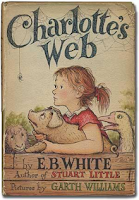Explore gender transformation in L. Frank Baum's The Marvelous Land of Oz. Discover how Tip, disguised as a boy, is revealed to be Princess Ozma in this classic tale. The following is a repost from the Stones of Erasmus archive.
 |
| Tip is the cap-wearing boy in L. Frank Baum's Oz 1904 sequel. |
Gender transformation in literature is nothing new. Tiresias was said to be both a man and a woman at different stages of his existence. And by the way, he said that being a woman is better. So when I read The Land of Oz in the Fifth Grade, it was nothing out of the ordinary to read about it in L. Frank Baum's fantasy novels. It's a motif in fantasy fiction to be sure - just see this TV tropes wiki page.
The Boy Tip
Tip is a fictional character in L. Frank Baum's second installment of his famous Oz books - The Marvelous Land of Oz (later shortened to The Land of Oz). While the Scarecrow, Dorothy, and the Gnome King often get noticed from readers as amazing Baum creations, Tip gets looked over in the Oz canon because he is actually not a real person (well, in the sense that in the story he is not who he seems to be). And his tenure in the Oz narrative is temporary.
*spoiler alert*
The Boy Tip
Tip is a fictional character in L. Frank Baum's second installment of his famous Oz books - The Marvelous Land of Oz (later shortened to The Land of Oz). While the Scarecrow, Dorothy, and the Gnome King often get noticed from readers as amazing Baum creations, Tip gets looked over in the Oz canon because he is actually not a real person (well, in the sense that in the story he is not who he seems to be). And his tenure in the Oz narrative is temporary.
*spoiler alert*























